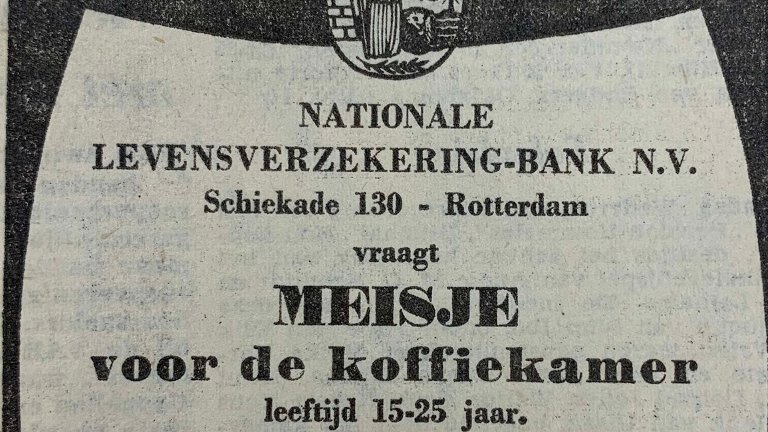Coffee at the office
Coffee has long been a cornerstone of Dutch culture, and this extends to the workplace, where productivity and morale often revolve around a good cup of coffee. In the past, there were only a few coffee (or tea) moments during the day, usually in the mornings and in the afternoons.
In the early days of smaller office setups, the live-in concierge and his wife were responsible of preparing coffee in the coffee room. However, as offices grew larger and staff numbers increased, canteens with coffee ladies became the norm. Morning and afternoon coffees were complimentary, while the ones during lunch required payment. At around 10:00, employees would take a short break to gather in the coffee room, a ritual repeated in the afternoon.
Around the 1950s, the twice-daily trips to the coffee room proved too time-consuming, leading to the introduction of waitresses who delivered the coffee. While this system was convenient, it was labour-intensive, and the biggest challenge for waitresses was ensuring the coffee was served piping hot and on time. Typically, only one cup was provided, leaving many employees craving more.
The 1970s saw the introduction of coffee machines, allowing employees to serve themselves whenever they wanted. These machines were placed in the coffee corner (pantry), where colleagues could easily socialise.
In the 1990s, as environmental awareness grew, steps were taken to reduce waste. The widespread use of disposable plastic cups led to the introduction of the so-called 'Beca-Bins', special recycling bins. As of 1 January 2024, plastic cups have been completely phased out, and employees enjoy their coffee from their own sustainable cup.



